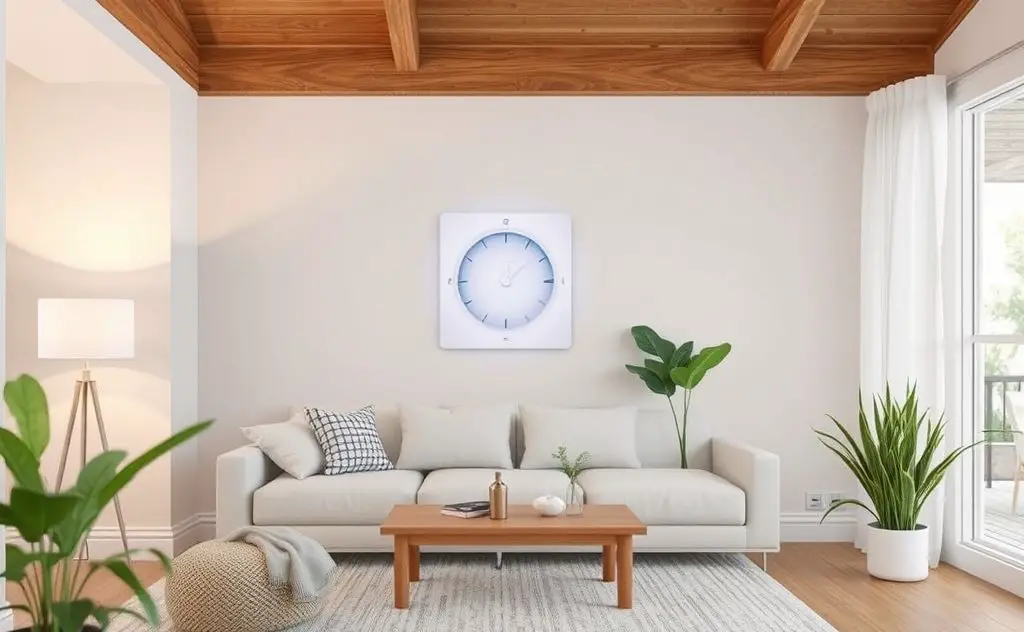To optimize home temperature settings, use a programmable thermostat, seal leaks, and adjust temperatures based on occupancy and seasonal changes for energy efficiency.
Optimizing your home’s temperature settings improves comfort, reduces energy bills, and extends HVAC system life. Whether you’re battling summer heat or winter chills, these expert strategies help maintain perfect indoor climates year-round.

1. Master Your Thermostat Settings
The right thermostat settings can save up to 10% on annual heating and cooling costs according to the U.S. Department of Energy.
Ideal Temperature Ranges
- Winter: 68°F when awake, 60-62°F when sleeping
- Summer: 78°F when home, 85°F when away
Smart Thermostat Benefits
Devices like programmable thermostats learn your schedule and adjust automatically. Many models provide energy usage reports and remote control via smartphone apps.

2. Implement Zoned Temperature Control
Multi-level homes often suffer from temperature imbalances. Try these solutions:
| Problem Area | Solution |
|---|---|
| Hot upper floors | Set 2°F cooler than main floor |
| Cold basements | Add supplemental heating |
| Sunny rooms | Install smart vents or blackout curtains |
3. Optimize Airflow Throughout Your Home
Ventilation Strategies
- Keep vents unobstructed by furniture
- Clean vents and ducts annually
- Balance airflow by partially closing vents in strong rooms
Ceiling Fan Directions
According to energy.gov, fans should rotate counterclockwise in summer and clockwise in winter at low speed.
4. Seal and Insulate Your Home
Air leaks account for 25-40% of energy used for heating and cooling in typical homes.
Key Areas to Address
- Weatherstrip doors and windows
- Insulate attics and basements
- Seal ductwork with mastic tape
- Install foam gaskets behind outlet covers
5. Use Window Treatments Strategically
Proper window management can reduce heat gain by up to 77% according to the International Window Film Association.
Seasonal Window Tips
- Summer: Close blinds during peak sunlight hours
- Winter: Open south-facing window coverings on sunny days
- Year-round: Consider insulating cellular shades
6. Maintain Your HVAC System
A well-maintained system operates 15-20% more efficiently. Key maintenance tasks include:
- Replace filters every 1-3 months
- Schedule annual professional tune-ups
- Clean outdoor condenser units
- Consider upgrading to a smart water heater controller for additional savings
7. Utilize Supplemental Heating/Cooling
Targeted temperature solutions prevent overworking your main HVAC system:
Effective Options
- Programmable space heaters for rarely used rooms
- Window AC units for hot spots
- Dehumidifiers in humid climates
- Attic fans to reduce heat buildup
8. Adjust Temperatures for Absences
Smart temperature setbacks can yield significant savings:
| Duration Away | Recommended Setting |
|---|---|
| Workday (8+ hours) | 7-10°F adjustment |
| Weekend getaway | 10-15°F adjustment |
| Extended vacation | 55°F (winter) / 85°F (summer) |
9. Leverage Heat-Producing Appliances
Time appliance use to complement your temperature strategy:
- Run dishwashers and dryers at night in summer
- Use oven during coldest daytime hours in winter
- Switch to LED bulbs to reduce heat output
10. Monitor and Adjust Humidity Levels
Proper humidity makes temperatures feel more comfortable:
- Ideal winter humidity: 30-40%
- Ideal summer humidity: 40-50%
- Use humidifiers/dehumidifiers as needed
By implementing these strategies, you’ll create a more comfortable home while reducing energy consumption and costs. Regular monitoring and small adjustments ensure optimal performance year after year.
